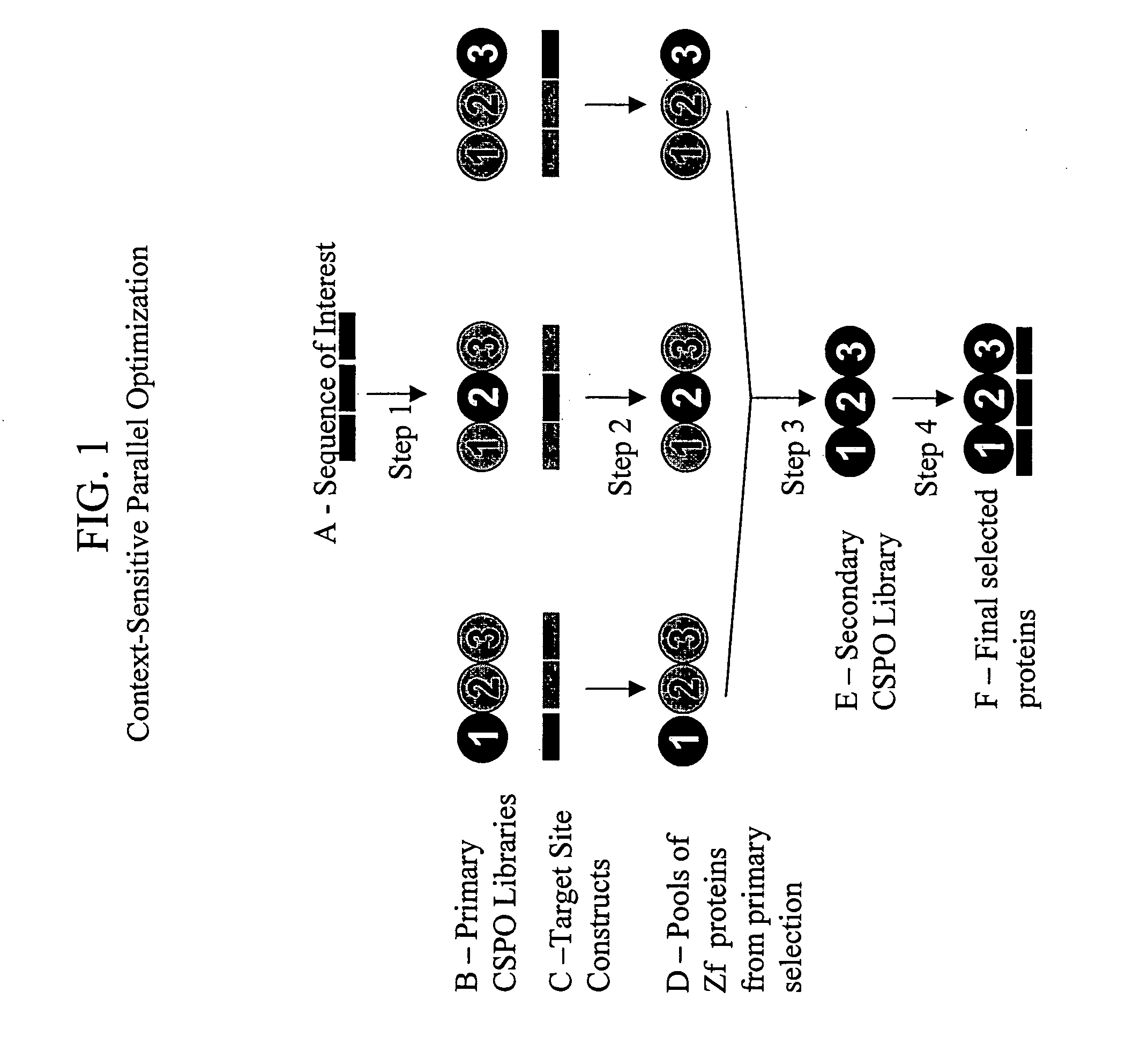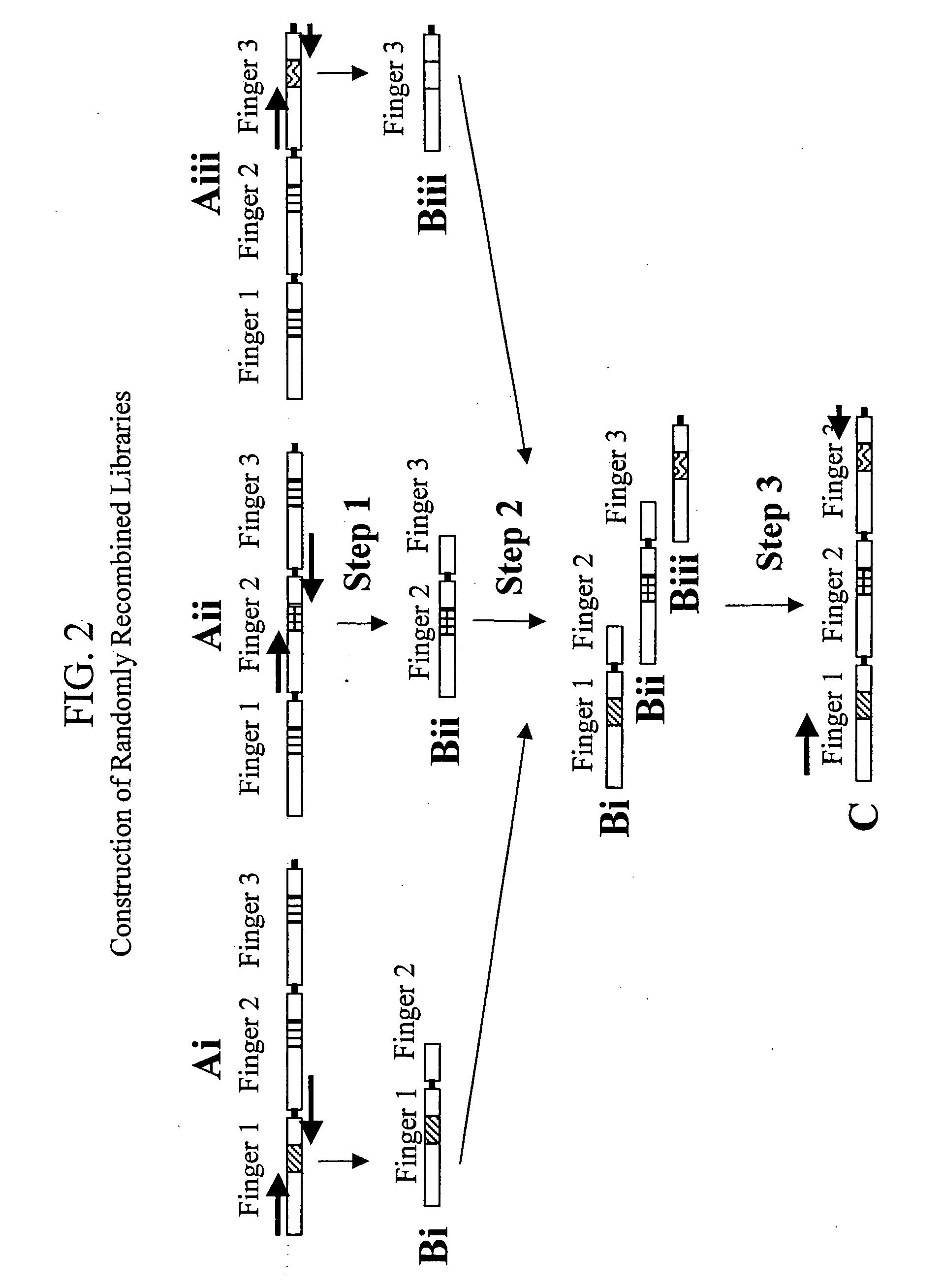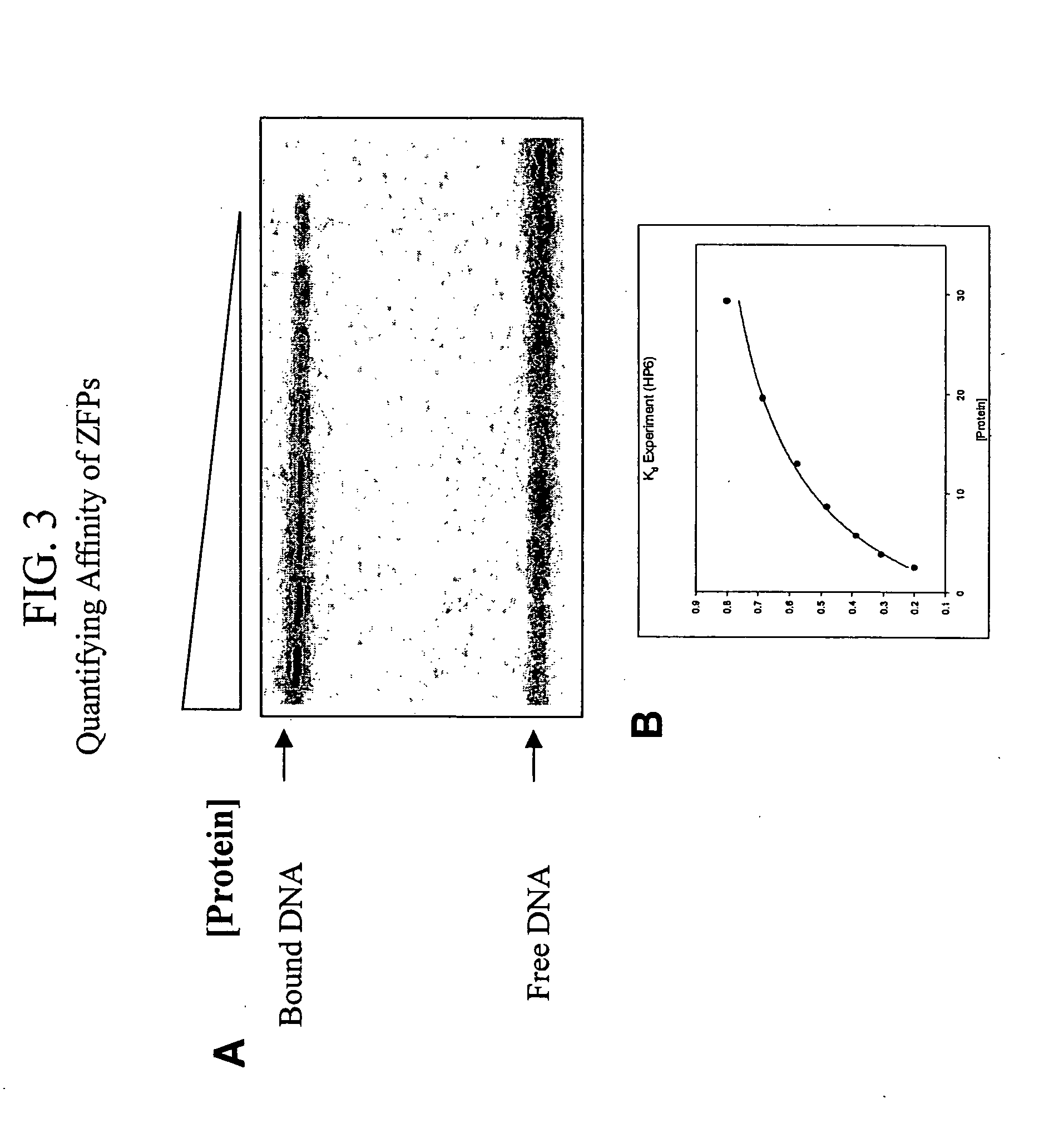Context sensitive paralell optimization of zinc finger dna binding domains
a dna binding domain and context-sensitive technology, applied in the field of zinc finger polypeptides having dna binding domains, can solve the problems of labor-intensive procedures, oversimplified models, and often misregulated gene expression in diseases, and achieves rapid and feasible means, high affinity and specificity, and sacrificing combinatorial diversity
- Summary
- Abstract
- Description
- Claims
- Application Information
AI Technical Summary
Benefits of technology
Problems solved by technology
Method used
Image
Examples
example 1
Construction of Multi-Finger Position-Sensitive Primary Libraries
[0242] Three different randomized “Primary Libraries” were constructed, each library comprising three fingers, one of which was variable / randomized and two of which were “anchored.” In “Primary Library 1” the N-terminal Zf (Zf 1) was randomized while Zf 2 and Zf 3 were held constant. In “Primary Library 2” the middle Zf (Zf 2) was randomized while Zf 1 and Zf 3 were “anchored.” In “Primary Library 3” the C-terminal Zf (Zf 3) was randomized while Zf 1 and Zf 2 were “anchored.”. These three libraries were constructed essentially as previously described by Joung et al. (Joung et al., (2000) Proceedings of the National Academy of Sciences (USA) 97: 7382), with two exceptions. The first exception was that different finger positions were randomized for each library made (i.e. Primary Library 1, Primary Library 2, and Primary Library 3). The second exception was that the 24 codons used to randomize amino acid residues in the...
example 2
Construction of Position-Sensitive Target Site
Constructs for Selection of Zf Polypeptides that Bind to the BCR-ABL Gene
[0245] Target site constructs were synthesized as oligonucleotides and introduced just upstream of the weak test promoter in the bacterial two-hybrid system, as described in Joung et al., (2000) Proceedings of the National Academy of Sciences (USA) 97:7382.
example 3
Construction of a Partially Optimized Secondary Library
[0246] The CSPO protocol (illustrated in FIG. 1) was designed so that “pools” of Zfs that bind with low affinity to their respective subsites in the primary selection could be isolated and recombined to generate a “Secondary Library.” Such secondary libraries were produced using PCR-mediated recombination of nucleotides encoding the Zf proteins identified in the primary selection, according to the method illustrated in FIG. 2. Recombined or “shuffled” zinc finger libraries containing random combinations of fingers identified in the initial low stringency selection were generated using PCR-mediated fusion of DNA fragments encoding individual finger units that preserved the position of fingers identified in the initial selections. For each library, approximately 200 selected (but unsequenced) recognition helices from each finger position were first amplified using finger position-specific primers and then randomly fused together ...
PUM
| Property | Measurement | Unit |
|---|---|---|
| Structure | aaaaa | aaaaa |
| Affinity | aaaaa | aaaaa |
Abstract
Description
Claims
Application Information
 Login to View More
Login to View More - R&D
- Intellectual Property
- Life Sciences
- Materials
- Tech Scout
- Unparalleled Data Quality
- Higher Quality Content
- 60% Fewer Hallucinations
Browse by: Latest US Patents, China's latest patents, Technical Efficacy Thesaurus, Application Domain, Technology Topic, Popular Technical Reports.
© 2025 PatSnap. All rights reserved.Legal|Privacy policy|Modern Slavery Act Transparency Statement|Sitemap|About US| Contact US: help@patsnap.com



